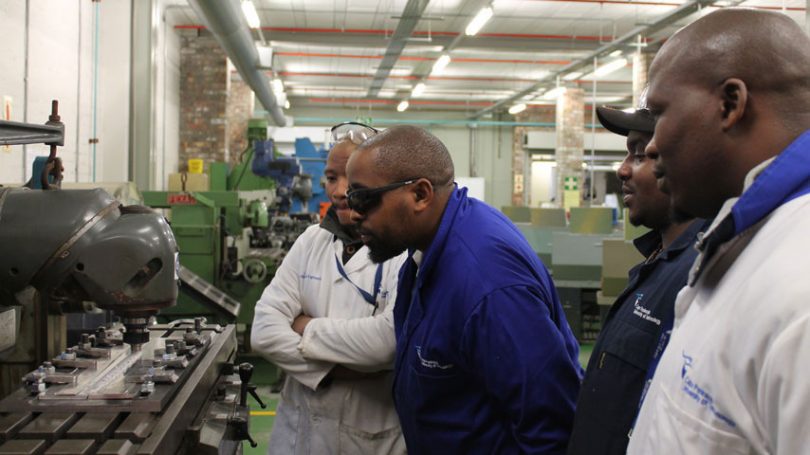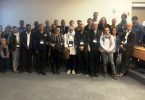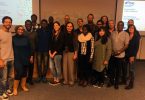Technicians and research leaders in the department of Mechanical Engineering have become the first in CPUT to successfully convert a milling machine into a friction stir welding machine.
Named Nkunzimalanga, (meaning surprise) the friction stir welding machine is used to join two similar or dissimilar metal plates without introducing a spark, as is the norm with conventional welding methods. Friction stir welding is a greener, cleaner and safer way to join metals like aluminium, which could melt when subjected to more traditional welding techniques.
CPUT has become one of the few institutions in the country to own this kind of machine. All the components of the welding machine were designed and developed in its department of Mechanical Engineering and developing everything in-house helped bring the costs of the machine down.
The idea of friction stir welding was introduced by Dr Kadephi Mjali at the beginning of 2017 when he joined CPUT from the Council of Scientific and Industrial Research (CSIR) in Pretoria. Mjali shared the idea with Dr Velaphi Msomi, lecturer and researcher in the Mechanical Engineering Department, hoping that the Department would help develop this niche area of research.
After consulting the literature, Msomi came upon the idea of converting a milling machine, which normally shreds metals, into a friction stir welding machine. This idea was then discussed with researcher and senior workshop technician, Vuyani Moni, for implementation. “Converting a milling machine into a friction stir welding machine would reduce the running costs of this research in the institution,” says Msomi.
Workshop technician Zukile Cobotwana, an expert in tool-making, made the stirring pin, while his colleagues, Moni and Malwande Masekwana, got to work on making the clamping fixture, which holds the plates being welded together in place. The pin and clamping fixture were then fixed to a milling machine, which rotates the stirring pin. The friction between the rotating pin and the metal plates generates the heat required to weld the aluminium plates together.
A couple of M. Eng students in the department are currently doing their research work on friction stir welding using different aluminium alloy plates. Msomi explains that aluminium is increasingly being used in both the automotive and aviation industries, “Aluminium is light, yet strong, so what we’re trying to find out is whether the welding of different alloys makes for stronger or weaker joints. If a stronger joint develops as a result, then that material can be used in the making of engineering components,” he adds.







